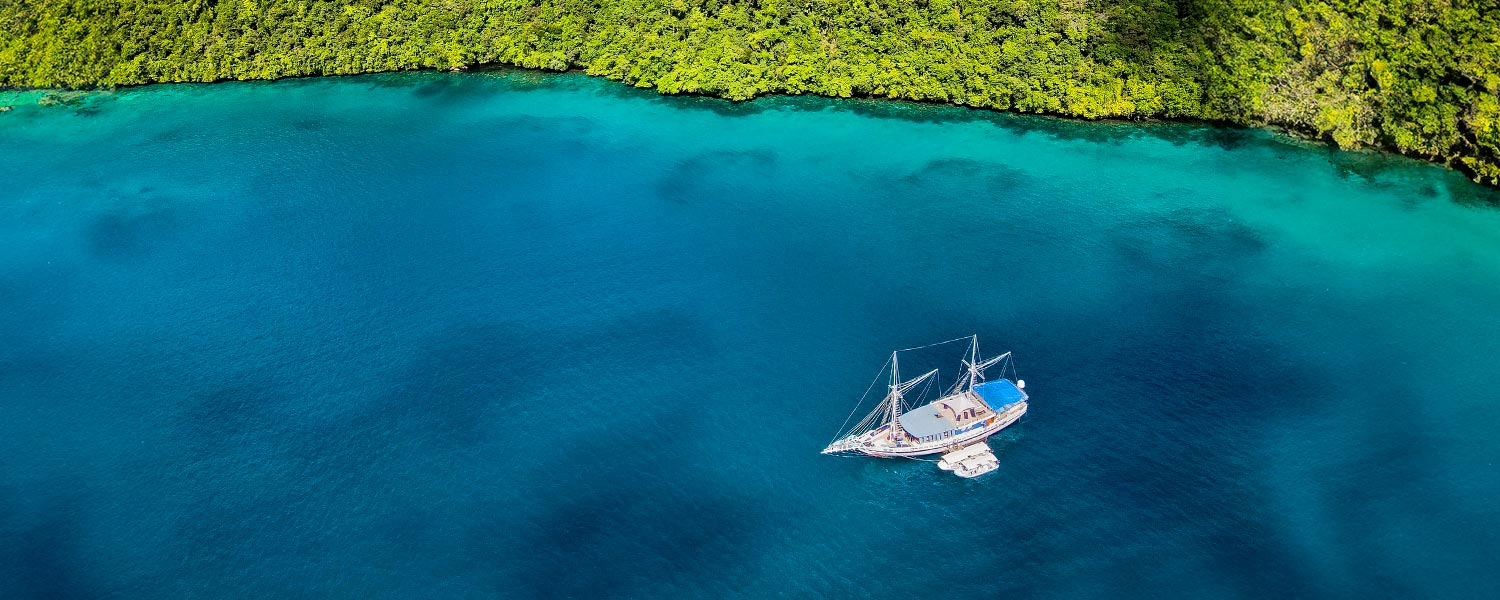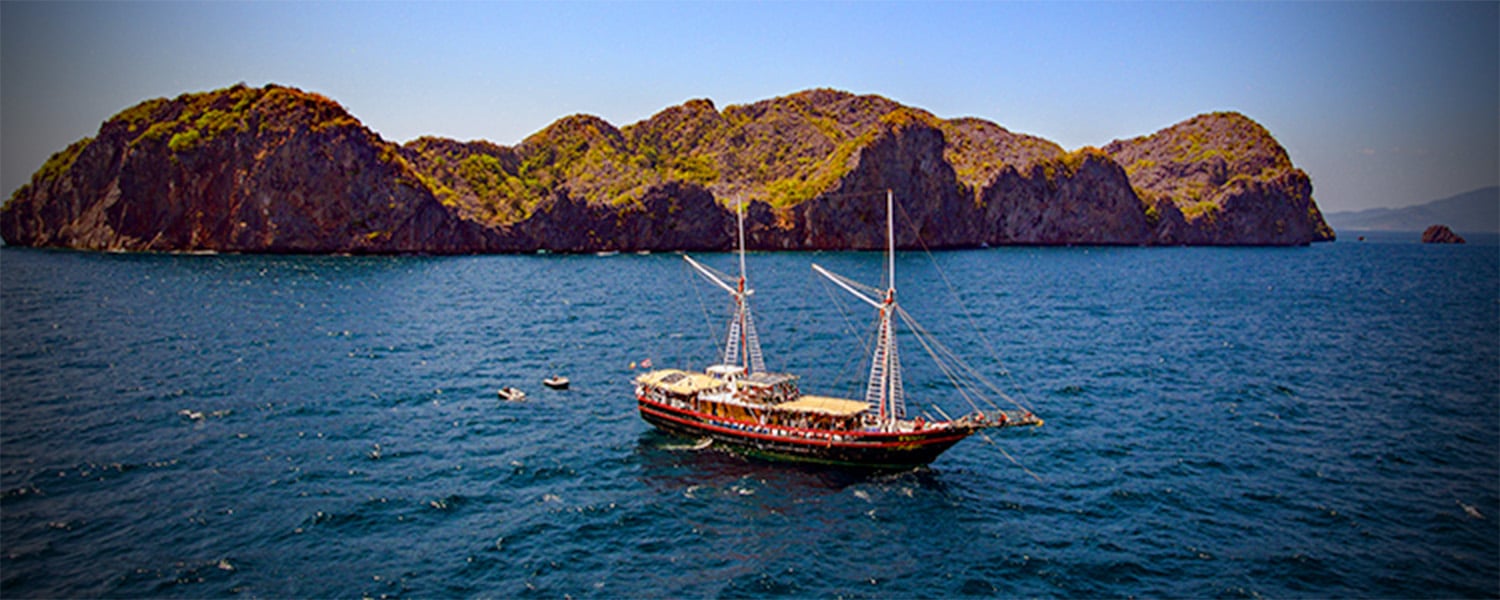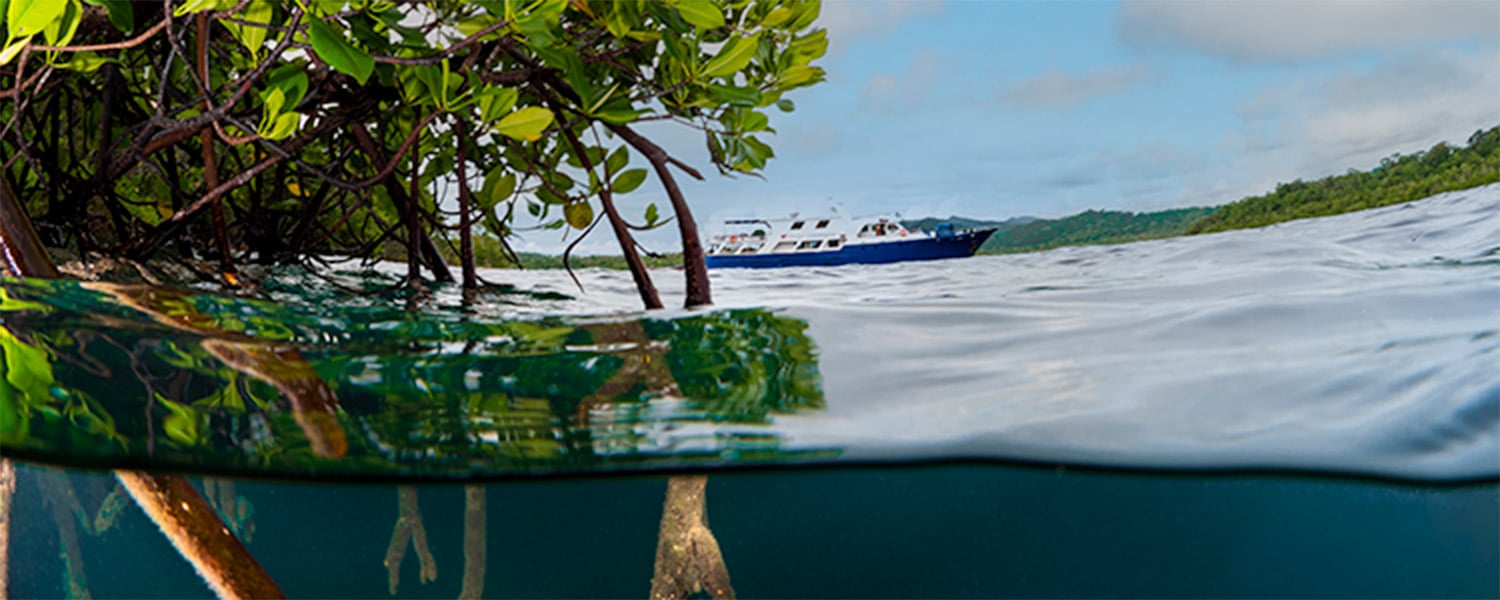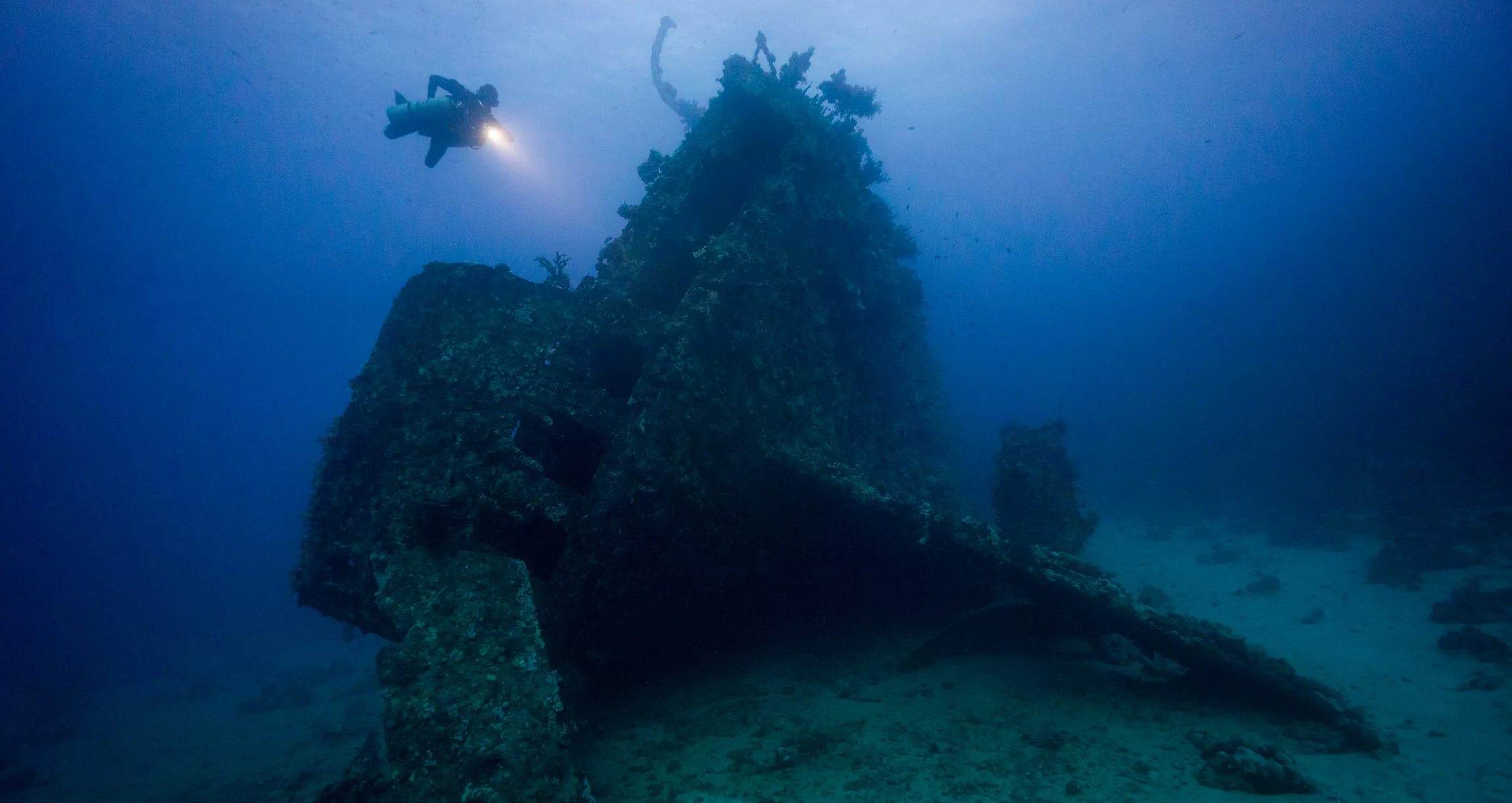Chuuk, or Truk Lagoon, is in the Federated States of Micronesia (abbreviated as FSM) and is considered the mecca for wreck divers. Before you head out to enjoy the underwater wonders in this dream destination, have a read through these 10 interesting facts about Chuuk!
1 – Its name
Chuuk means “high mountains” in the Chuukese language. You will directly see upon your arrival why it got this name – literally as you land! The mountain Tonnachau is a large landmark rising above Chuuk International Airport.
Another of our interesting facts abut Chuuk is that we don’t always call it Chuuk. Often, we call it Truk. So, should we say Chuuk or Truk? To find out read our Chuuk vs Truk blog.

2 – It’s one of the least visited places on Earth
Because the country is so small and remote, it is one of the least visited countries in the world as per the United Nations World Tourism Organisation report. It ranks behind the Marshall Islands (6000 visitors) but ahead of Solomon Islands (22,000 visitors). The FSM registers less than 19,000 visitors every year and most of them are going there for diving.
The chances are you’ve never heard of the FSM if you are not a diver. Go ahead test it on your colleagues and families! At Master Liveaboards, we tend to take you to rather special places!
3 – The legend of Wonip
Every town and village on the planet has their own legend. Chuuk is no different and has the legend of Wonip (sometimes called Wanip). The story says that 5 brothers living on an island in Chuuk Lagoon were told by their father about a lost sunken island in the lagoon. After their father passed away, the 5 brothers decided to look for it, searching for 3 days without finding it. All thought that it was just a story and gave up looking for it. But the youngest brother could not shake the idea and left alone to carry on searching.
In the waters, he saw a huge white shark and followed it. The boy felt that this shark was his father’s ghost and sure enough, the shark led him to a spot. The brother knew this was the place when the shark left him suddenly, so he dropped his anchor and went for a swim. He dived deep below the surface and surprise, surprise: the lost island was there! He headed back home to tell the news and the 5 of them headed back to the spot.
After tying up the island, they tried one by one to lift it out of the water but all failed. The younger brother was the last one to try. To everyone’s amazement, he managed to pull it to the surface. At that very moment, a black bird flew overhead. The bird told the brothers that the island should be called Wonip. He also told them that it must remain forever the property of the youngest son who had believed his father.
Folklore or not, there is an actual island called Wonip, which was the name of the brothers’ clan.
4 – The centre of a political chess match
Chuuk has been under the control of plenty of nations over the years. The islands were first sighted by the Spanish explorer Álvaro Saavedra in 1528 and claimed by Spain. For soem 300 plus years, traders and whalers occasionally visited the islands until finally Germany purchased parts of Micronesia from Spain in 1899.
In 1914, Japan annexed the islands and invested a huge amount of time and money fortifying them. As with many of the Pacific islands, this made them an important target for allied forces during World War II. This of course came to pass and resulted in the amazing wrecks you can still dive today, but also a lot of relics on land.
After the war, they became part of the newly-formed U.S.-administered United Nations Trust Territory of the Pacific Islands from 1947 to 1979. The trust included a lot of Pacific nations but broke up when the Marshall Islands declared their independence (they did not want to share the extra grants they were receiving from the US for having allowed the nuclear tests). In 1979, following a vote, Chuuk joined the newly formed Federated States of Micronesia with its capital in Pohnpei. They then signed the “Compact of Free Association” agreement with the US. This means that FSM defense is the responsibility of the USA, who also has the right to set up military bases there. Micronesia receives two thirds of its GDP in financial aid per year from the US and its citizens have the right to live and work in the US.
So from Spain to Germany to Japan and then the USA, the country has really been the focus of a game of political chess!
5 – The lagoon of lost ships
In 1969, William A. Brown and Jacques Cousteau, along with their team, explored Truk Lagoon. Cousteau produced a documentary called “Lagoon of lost ships” in 1971. It was released as an episode of his famous TV series, “Undersea World of Jacques Cousteau”. This episode made Truk Lagoon instantly famous as a scuba diving mecca and wreck lovers’ paradise.
During the episode, they explored the Pacific lagoon to learn how marine life adapted to foreign matter. The divers also discover an uncharted sunken freighter, complete with hundreds of skeletons of its long-dead crew, who perished in the special living quarters built around the third hold. The wreck in question was later identified as the Aikoku Maru.
Cousteau’s team were filming for two months, but were not aboard the famous Calypso expedition vessel. They used a local operator who was obviously very privy to the sunken treasures. The team explored both land and underwater relics and at the time of filming, the identities of most wrecks were unknown or unconfirmed.
To add to the interesting facts about Chuuk, Cousteau exaggerated the depths of the wrecks. He also said at the time that the lagoon was devoid of large fish and sea life that usually dwell in shipwrecks. The scars of war were still fresh, even in the late 1960’s, and large fish populations had been driven away by use of wartime explosives for fishing.

As Cousteau said “For generations to come, the living has to carry the burden.” The episode closing statement also still resonates nowadays…
“Truk Lagoon presents a mysterious planet of life and death. On the one hand, nature absorbs the artifacts of war. And on the other, she has preserved them. Only centuries from now, will every trace of man’s follies vanish from the bottom of Truk Lagoon.”
Jacques Cousteau
6 – Operation Christmas Drop
‘Operation Christmas Drop‘ is the longest ongoing US Department of Defense mission which remains in full operation. To this day, it also holds the record of the longest-running humanitarian airlift in the world. The mission first started as a one-off spontaneous act when a crew, flying over the atoll of Kapingamarangi, saw some of the locals waving at them. The crew quickly gathered some items they had onboard and dropped the cargo by parachute. By 1952, it became an official US Air Force training mission and according to the latest numbers, they have dropped more than 360,000 kilos of supplies since then.
The operation is primarily conducted from Guam, but occasionally also from Japan, and targets Micronesia territories and about 20,000 islanders. Each box dropped from an aircraft weighs almost 200 kg and contains items such as fishing nets, construction materials, powdered milk, canned goods, rice, coolers, clothing, shoes, toys, and school supplies. Containers are dropped in the water, just off the beaches, in order to avoid them hitting any locals or infrastructure.
The US army uses Operation Christmas Drop as a practice exercise for the personnel who will later have to deliver humanitarian air drops to places like Iraq or Afghanistan. In 2015, the Japan Air Self-Defense Force and the Royal Australian Air Force also participated in the operation.
7 – The million dollar wreck
The most famous wreck in Chuuk is the ‘San Francisco Maru’, but everyone calls her ‘The million dollar wreck’. The nickname probably comes from her cargo. She was full of all kinds of armaments, trucks, tanks, and other valuable cargo; of which a lot can still be seen today.

8 – An impending eco issue
The wrecks in the lagoon obviously sunk during wartime. This means that they were not sanitized prior to their descent into the depths. A team of Australian scientists likened the effect of the potential massive release of oil into the lagoon to that of the Exxon Valdez spill in Alaska.After all, there are likely tens of thousands of tonnes of oil in the rusting Japanese fleet. The only saving grace is that given the poor state of the Japanese war effort in 1944, many of the ships may have had relatively small amounts of fuel in their bunkers.
Environmental protection organizations have been surveying the wrecks since 2008, while also consulting with Japanese researchers to try to determine how much oil is likely to be in the hulks. Of particular worry are the three sunken oil tankers, one of them the Hoyo Maru.
The only long-term solution is to pump out the oil in order to avoid severe damage to the local biodiversity and economy. It is not clear who will foot the bill. The vessels are Japanese but in foreign territory, and the Chuukese government is unlikely to have sufficient funds. The ships are also classified as a Japanese war grave, requiring Japanese government involvement in the eventual clean-up.
9 – Traditional marriage practices
Traditionally on Chuuk, before a man could consider marriage, he needed to have experience in farming, fishing, and boat and house construction.
Once he had mastered all of those skills, he would inform his parents that he was ready for marriage. His parents would then start looking for a perfect match to be his wife. When they had decided on a girl, they would visit the girl’s parent to introduce themselves and possibly discuss the marriage. If both parties agreed, the youngsters would switch places with the man staying at his in-laws and the woman at hers, until the wedding day.
On the wedding day would be a feast attended by the leaders of their respective families and clans. According to custom, the girl’s family would provide enough food for the boy’s family. His family would do the same for the girl’s.
Of course, this is tradition, and with time has changed. But you can still see some of these past traditions in Chuuk. This transpires in choosing a partner who is a good worker and compatible with their respective communities. A person incapable of work is unlikely to be successful at marriage in Chuuk.
10 – Budget
The Chuukese have a custom called “budget”. It’s a very easy concept and part of the etiquette on the islands. Simply, if you have something in excess and someone tells you “budget”, you are to give this person your excess. The practice usually is used between family members as clan and family is very important. Chuuk is traditionally a communal culture. What is mine is yours and what is yours is mine – especially when it comes to family!
To give you an idea, prestige is not based on your job, title, or how much money you have. It is based on how many people you know and what clan they are from. So sharing is caring.



